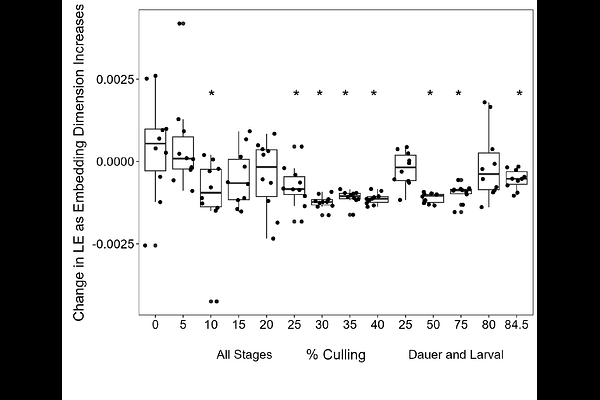Chaotic behavior influenced by an environmental parameter in simulated C. elegans populations

Chaotic behavior influenced by an environmental parameter in simulated C. elegans populations
Bergstrom, E.; Scharf, A.
AbstractPopulation dynamics can be chaotic when driven by internal feedback loops, including density-dependent mechanisms, making them predictable only for short periods of time. Since the first discovery of chaos in simple population models, many wild and laboratory populations have been characterized as chaotic. We ask whether a population simulation through a bottom-up modeling approach such as agent-based modeling can display chaotic dynamics. Here, we use wormPOP to simulate C. elegans population dynamics with changing culling parameters and calculate the largest Lyapunov Exponents of the simulated populations. The agent-based model wormPOP is a realistic simulation based on a laboratory population system with C. elegans and its food source E. coli. Our results show that depending on the percentage of culling, populations can exhibit chaotic or periodic behavior. Build-in randomization and the buffering of stress through alternative stress-resistant larva stages in C. elegans, complicates the analysis of wormPOP populations, however, the calculated LE for the identified chaotic conditions is robust to changing parameters in our analysis and fits expectations based on the scaling of LE with body size. In conclusion, agent-based models can generate realistic population dynamics that can be chaotic dependent on the chosen parameters.